|
|
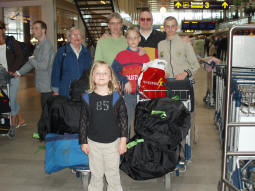
|
|
Copenhagen Airport. Ready to take-off. To the left, Knud Henrik's mother who had come to say fare-well. |
|
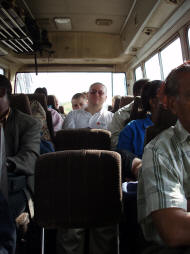
|
|
On the bus from Nairobi to Arusha. |
|
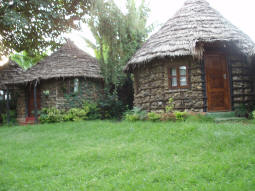
|
|
L'Oasis Lodge, Arusha. We stayed in the hut to the left and in another one further to the right. |
|
|
|
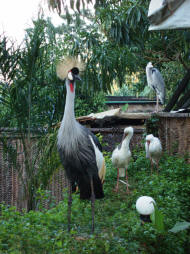
|
|
L'Oasis Lodge, Arusha. Live garden decoration: A grey crowned crane, a couple of african spoonbills and in the back a heron. |
|
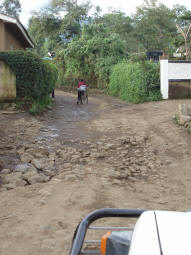
|
|
Arusha: The magnificent access road to L'Oasis Lodge... |
|
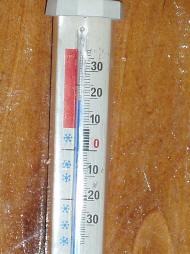
|
|
L'Oasis Lodge, Arusha. Welcome to the melting hot Africa: 19 degrees Celsius. |
|
|
|
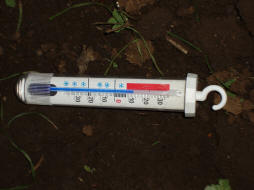
|
|
L'Oasis Lodge, Arusha. One morning we even had to make do with a mere 13 degrees Celsius... |
|
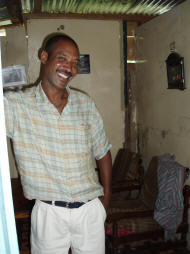
|
|
Our driver, Japhet, at his own place near Arusha. |
|
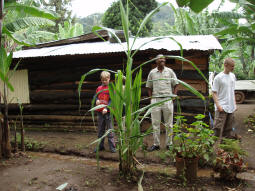
|
|
Japhet's place. |
|
|
|
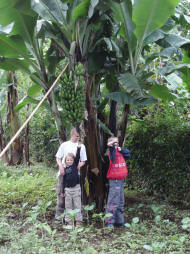
|
|
Japhet's place with a lot of bananas. |
|
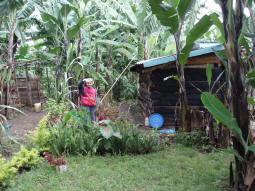
|
|
Japhet's place. |
|
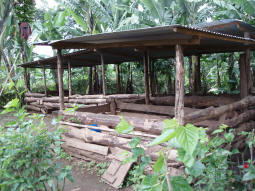
|
|
The pigsti at Japhet's place, unfortunately without pigs. |
|
|
|
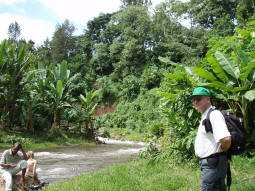
|
|
The river close to Japhet's place. |
|
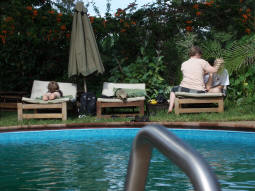
|
|
L'Oasis Lodge, Arusha. Relaxing at the pool. |
|
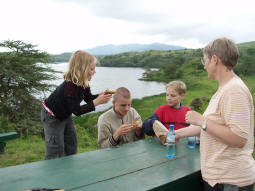
|
|
Arusha National Park: Picnic at Small Momella Lake. |
|
|
|
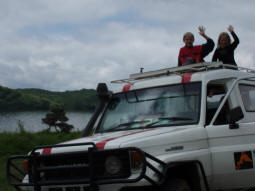
|
|
Arusha National Park: Safari with a view... |
|
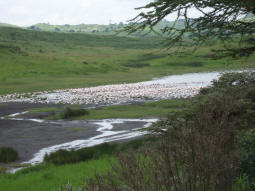
|
|
Arusha National Park: Lesser and Greater Flamingos at Small Momella Lake. |
|
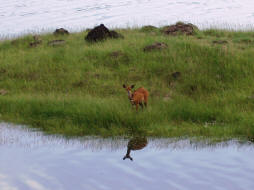
|
|
Arusha National Park. Reedbuck, one of the smaller and rather rare antelope species. |
|
|
|
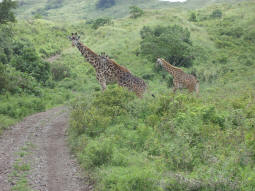
|
|
Arusha National Park: Three giraffes have discovered something interesting... |
|
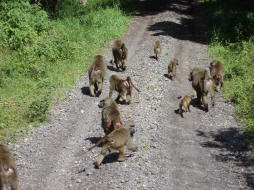
|
|
Arusha National Park: Baboons. |
|
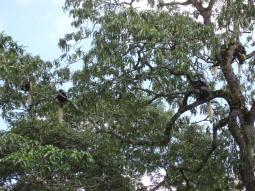
|
|
Arusha National Park: Black-and-White Colobus Monkeys at the Ngurdoto Crater rim. |
|
|
|
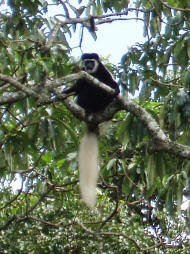
|
|
Arusha National Park: Black-and-White Colobus Monkey (part of the preceding picture). |
|
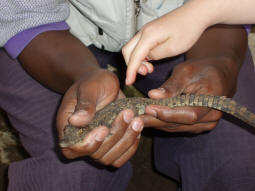
|
|
Arusha, Meserani Snake Park: Lea nursing a approximately two months old Nile Crocodile. |
|
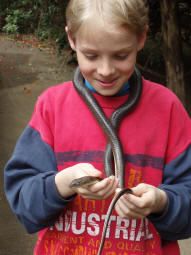
|
|
Arusha, Meserani Snake Park: Aske falling in love... |
|
|
|
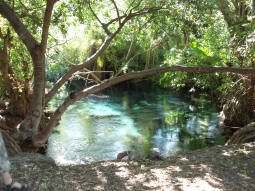
|
|
Arusha, hot spring "Chemka" ("Boiling" in swahili...). The water comes right up from underneath the feet of the potographer. |
|
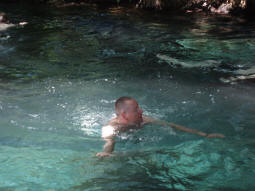
|
|
Arusha, hot spring: Really nice to swim in this perfectly tempered salty water flowing at a gentle speed. |
|
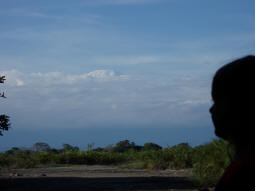
|
|
Arusha, about to leave the hot spring: Our first clear view of the Kilimanjaro summit. |
|
|
|
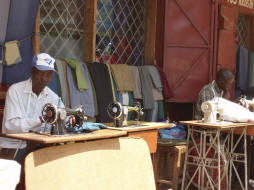
|
|
Arusha. A tailor's workshop - electrified, wauw! |
|
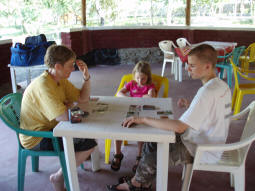
|
|
Relaxing at the camp site at Minjingo: Theis is trying hard to teach Mai-Britt to play Magic the Gathering. |
|
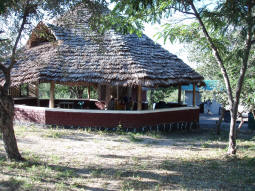
|
|
The shady refuge at the camp site at Minjingo. |
|
|
|
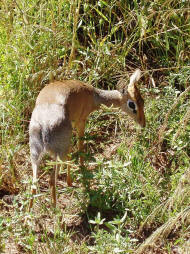
|
|
Tarangire National Park: The cute, tiny dik-dik deer. |
|
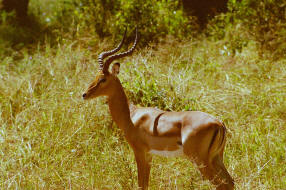
|
|
Tarangire National Park: A male impala on watch. |
|
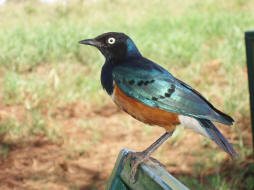
|
|
Tarangire National Park: One of the about 500 different kinds of birds observed in this national park. |
|
|
|
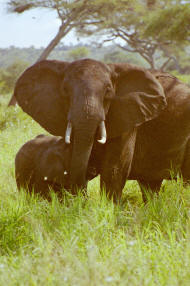
|
|
Tarangire National Park. This elephant seems to find us a little too close... |
|
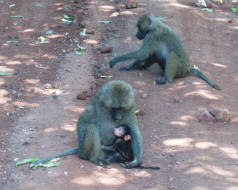
|
|
Lake Manyara National Park. Baboons in different sizes. |
|
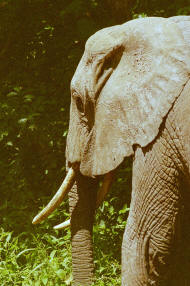
|
|
Lake Manyara National Park. The beginning of an ... |
|
|
|
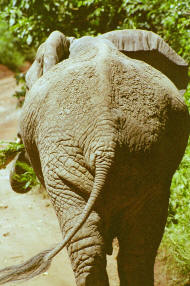
|
|
Lake Manyara National Park. ... and the end. |
|
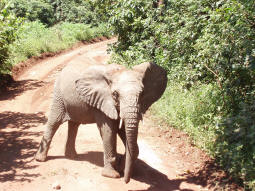
|
|
Lake Manyara National Park: Who has the right to the road? |
|
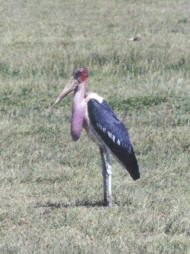
|
|
Lake Manyara National Park. Marabu Storch. |
|
|
|
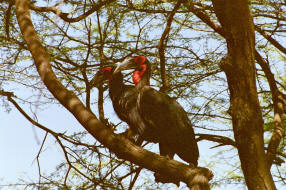
|
|
Lake Manyara National Park. Two Ground Hornbills (Bucorvus leadbeateri). |
|
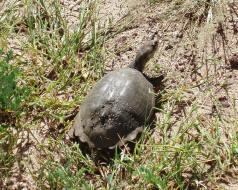
|
|
Lake Manyara National Park. Swamp tortoise. |
|
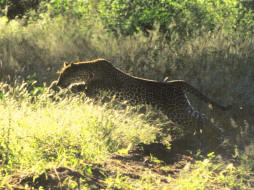
|
|
Lake Manyare National Park. A leopard. |
|
|
|
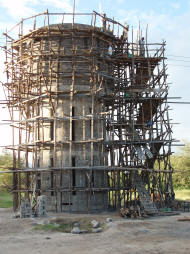
|
|
Mto-wa-Mbu. A water tower is constructed ... |
|
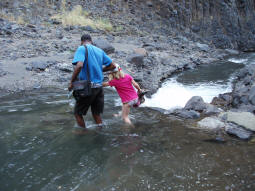
|
|
Lake Natron: It really takes an effort to have a shower in a waterfall... |
|
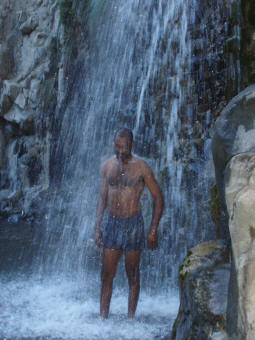
|
|
Lake Natron: ...at last the reward is at hand. |
|
|
|
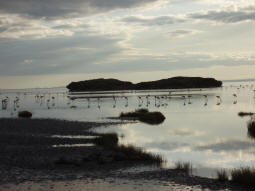
|
|
Lake Natron: Flamingos. |
|
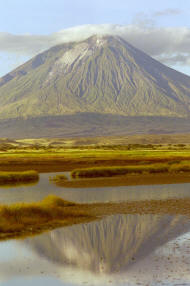
|
|
Ol Donyio Lengai. Mountain of God, the only active volcano in Tanzania. |
|
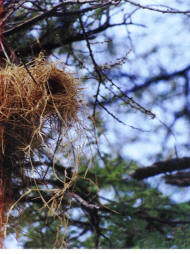
|
|
Lake Natron. Weaving bird's nest. |
|
|
|
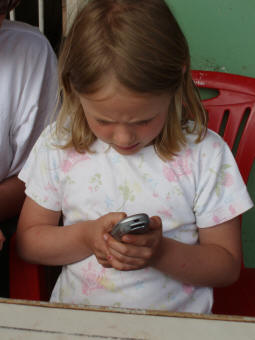
|
|
Karatu: Lea sending her first SMS. |
|
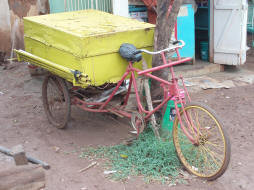
|
|
Karatu. Bicycles are an important element of the transportation. |
|
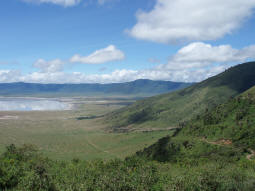
|
|
Ngorongoro Crater: A small part of the magnificent view from the crater rim. |
|
|
|
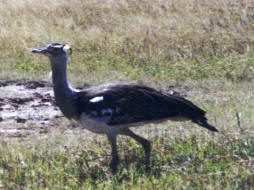
|
|
Ngorongoro Crater. A Kori Bustard, the heaviest flying bird in the world. |
|
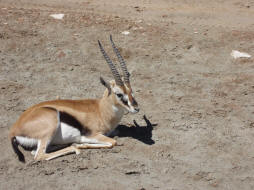
|
|
Ngorongoro Crater. Thomson gazelle. |
|
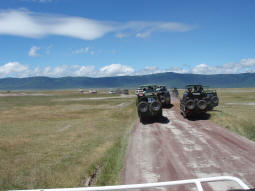
|
|
Ngorongoro Crater: Safari tourist watching rhinos... |
|
|
|
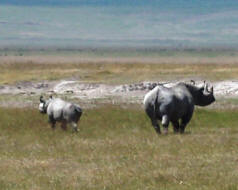
|
|
Ngorongoro Crater. And here they are: Black Rhinoceros, a mum and her kid. |
|
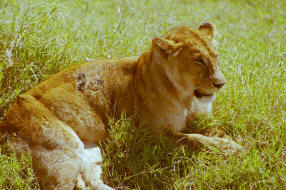
|
|
Ngorongoro Crater. Right, it's a lion. |
|
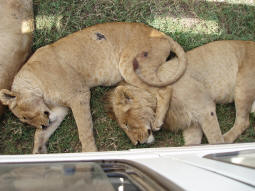
|
|
Ngorongoro Crater: Three lions enjoying the shade along the car... |
|
|
|
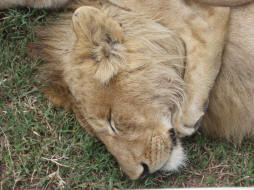
|
|
Ngorongoro Crater. "Sssshhh, don't disturb me." |
|
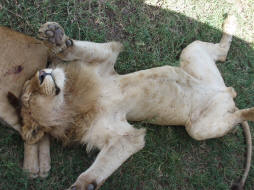
|
|
Ngorongoro Crater. Just relax, man! |
|
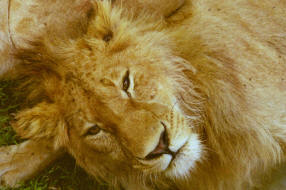
|
|
Ngorongoro Crater. "Hey, don't move the car! I like the shade." |
|
|
|
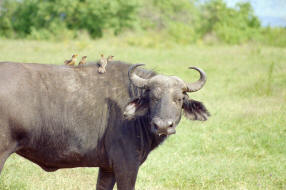
|
|
Ngorongoro Crater. Buffalo. |
|
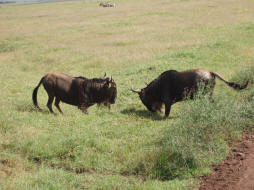
|
|
Ngorongoro Crater. Two wilderbeasts fighting over a wisp of grass. |
|
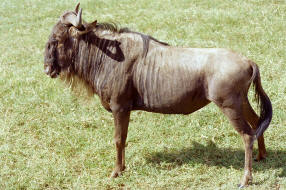
|
|
Ngorongoro Crater. Wilderbeast. |
|
|
|
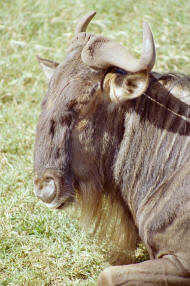
|
|
Ngorongoro Crater. Wilderbeast. |
|
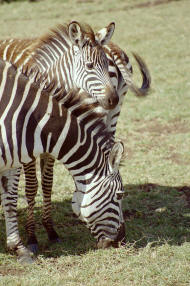
|
|
Ngorongoro Crater. Zebras. |
|
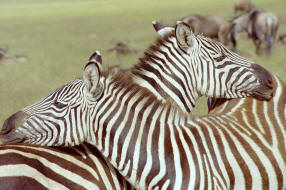
|
|
Ngorongoro Crater. Zebras. |
|
|
|
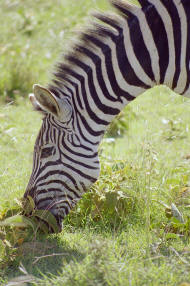
|
|
Ngorongoro Crater. Zebra. |
|
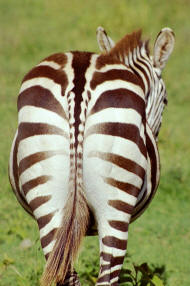
|
|
Ngorongoro Crater. The Zebra, the end. |
|
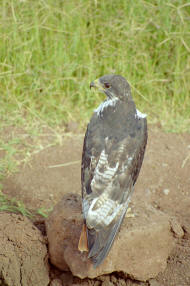
|
|
Ngorongoro Crater. Tawny Eagle. |
|
|
|
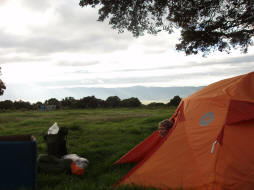
|
|
Ngorongoro Crater rim. A tent with a view... |
|
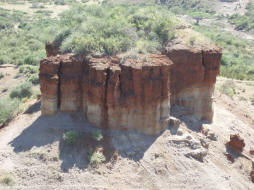
|
|
Olduvai Gorge. In this gorge up to 2 million years old human made stone tools as well as a wealth of skeleton parts of humans and various animals have been found. |
|
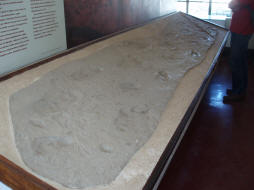
|
|
Olduvai Gorge. At Laetoli, 25 km from Olduvai Gorge, Mary and Louis Leakey found 3.6 million years old human prints of which the shown cast is made. In Ethiopia the oldest human remnants have been found, 3.7 million years old. |
|
|
|
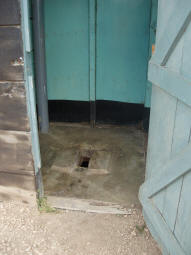
|
|
Lake Ndutu: One of the nicer toilets, here at park office at Lake Ndutu. Under the concrete slab there is just a deep hole in the ground. |
|
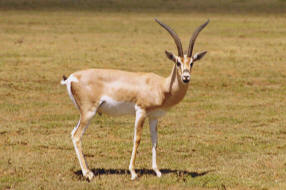
|
|
Ngorongoro Conservation Area. Grant's Gazelle. |
|
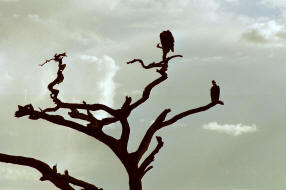
|
|
Ngorongoro Conservation Area. Vultures on watch. |
|
|
|
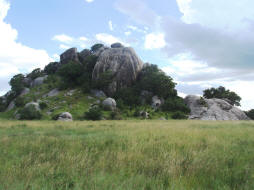
|
|
Serengeti National Park, Simba Kopjes ("Simba" is Swahili for "lion", "kopjes" is Dutch for "little head"). The central part of the Serengeti Plain is overstrewn with these socalled kopjes, volcanic formations where the surrounding cone has been eroded away while the hardened magma stands back. Simba Kopjes is known as a lion site. Actually, a lion can be seen in the picture. Can you find it? |
|
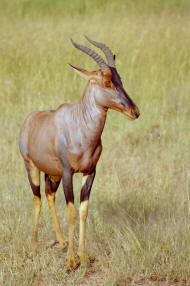
|
|
Serengeti National Park. Topi, one of the many beautiful anthelope species. |
|
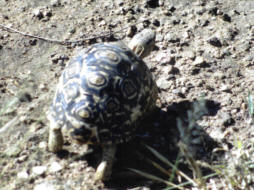
|
|
Serengeti National Park. Leopard tortoise (åØåGeochelone pardalis).
|
|
|
|
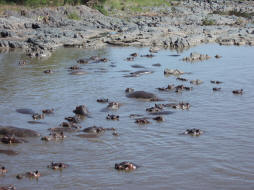
|
|
Serengeti National Park. Hippos live in flocks. There is about 100 hippos in this flock. In the back some crocodilles. |
|
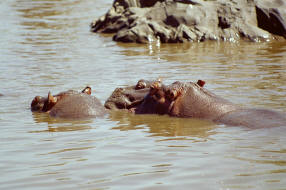
|
|
Serengeti National Park. Hippos in their preferred daytime, cooling environment. |
|
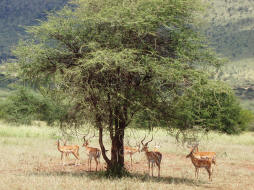
|
|
Serengeti National Park. A small group of impalas. Very unusually, there are two males in this family group. |
|
|
|
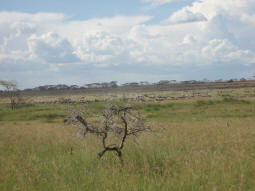
|
|
Serengeti National Park: A very small fraktion of the very many wildebeests and zebras. |
|
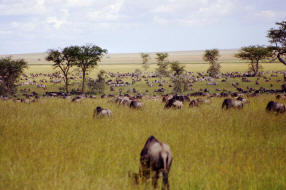
|
|
Serengeti National Park: Another very small fraktion of the very many wildebeests and zebras. |
|
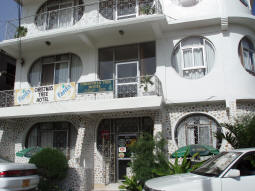
|
|
Mwanza: The "christmas Tree Hotel". We were staying in two rooms on the third floor. |
|
|
|
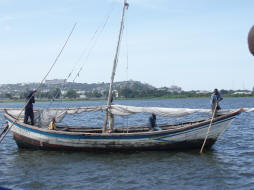
|
|
Mwanza. A dhow, a common boat type navigating the Lake Victoria. |
|
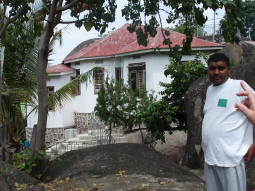
|
|
Mwanza: Ibrahim, Japhet's brother in law in front of his nice little house. |
|
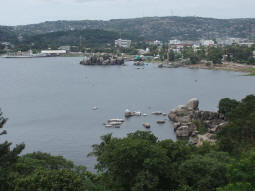
|
|
Mwanza: The view from Ibraham's house. Just above the centre is the landmark of Mwanza, the socalled Bismarck Rock, |
|
|
|
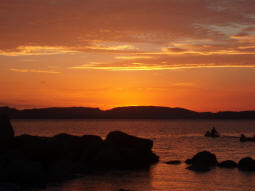
|
|
Nyegezi, Mwanza: Sunset over Lake Victoria. |
|
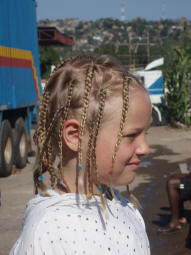
|
|
Mwanza. Lea has got an African coiffure. |
|
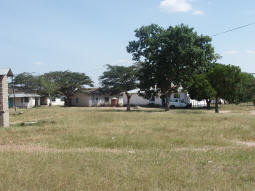
|
|
Missungwi. Community Development Training Institute where Knud Henrik worked 1993-94. No major changes here. |
|
|
|
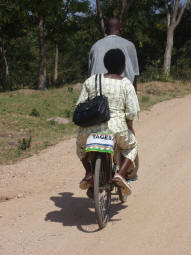
|
|
Missungwi. A local taxi taking a lady to the bomani area. |
|
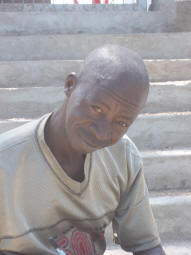
|
|
Missungwi. My old handyman, Faustino. |
|
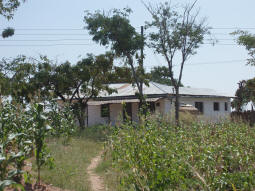
|
|
Missungwi. "My" old house. A bit more devastated, but otherwise it looks the same. |
|
|
|
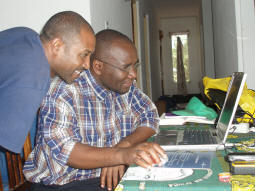
|
|
Missungwi. Mr. Msumi demonstrating some interesting details on the computer to Japhet. |
|
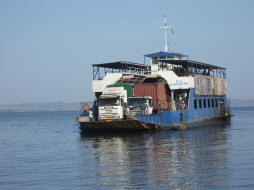
|
|
Kigongo. The MV Sengerema ferry navigating a corner of Lake Victoria called Mwanza Gulf. |
|
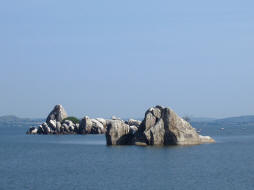
|
|
Lake Victoria. Kopjes protruding the water surface. Lake Victoria is the largest lake in Africa with an area of 68.800 square kilometres. Despite the vast area the maximum depth is only 84 m. |
|
|
|
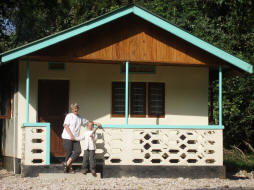
|
|
Rubondo Island National Park. We stayed in this nice little cottage. |
|
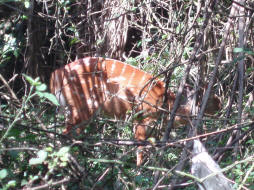
|
|
Rubondo Island Narional Park. Sitatunga, a very shy deer species. |
|
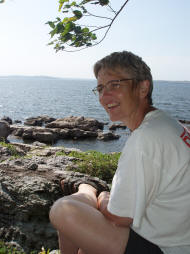
|
|
Rubondo Island National Park. Mai-Britt enjoying the view over the Lake Victoria. |
|
|
|
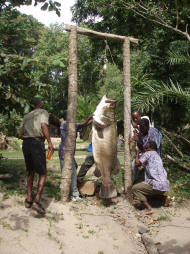
|
|
Rubondo Island National Park. Some other tourist had caught a small nile perch of some 67 kg. |
|
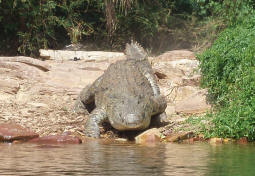
|
|
Rubondo Island National Park. This bloke has put his eyes on - us! |
|
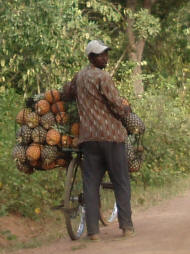
|
|
Geita. In rural areas the bicycle is an indispensable means of transport of all sorts of goods, here pineapple. |
|
|
|
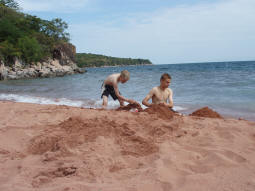
|
|
Kigoma, Jakobsen's Beach. Theis and Aske building a major construction out of the cinnamon-coloured sand. |
|
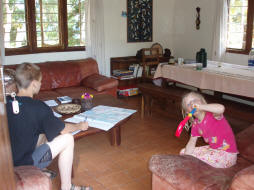
|
|
Kigoma, Jakobsen's Guesthouse. A really pleasant (and very Nordic - !) place owned by a Norwegian family. |
|
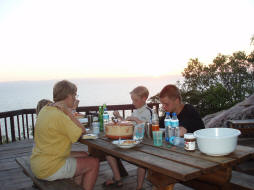
|
|
Kigoma, Jakobsen's Guesthouse. Dinner with a view. |
|
|
|
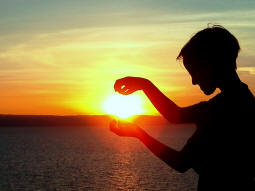
|
|
Jakobsen's Beach and Guesthouse, Kigoma. Aske is tucking in the Sun. |
|
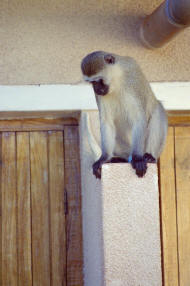
|
|
Kigoma, Jakobsen's Guesthouse. The monkeys were really naughty. |
|
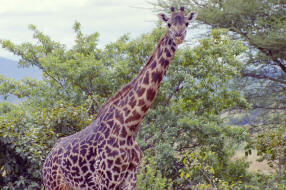
|
|
Katavi National Park. Yet another one of the curious long-necked with four legs. |
|
|
|
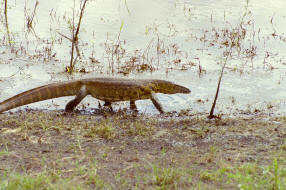
|
|
Katavi National Park. Monitor Lizard (probably åØåVaranus niloticus). |
|
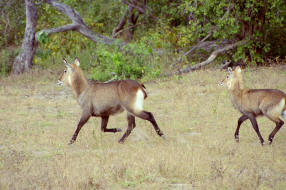
|
|
Katavi National Park. Waterbuck (åØåKobus ellipsiprymnus). |
|
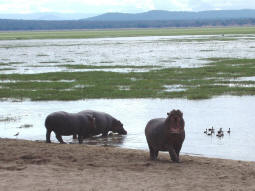
|
|
Katavi National Park. Normally, hippos spend the whole day submerged in the water but today they had decided for a stroll on shore. |
|
|
|
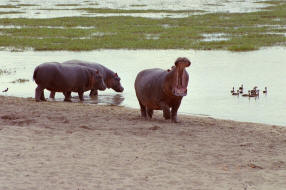
|
|
Katavi National Park. The hippo has the largest gap of all the wild African animals. |
|
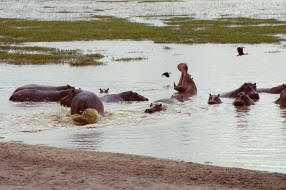
|
|
Katavi National Park. Hippos. |
|
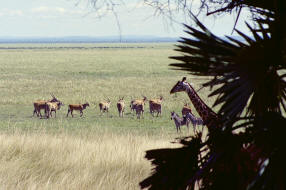
|
|
Katavi National Park. Eland anthelopes. |
|
|
|
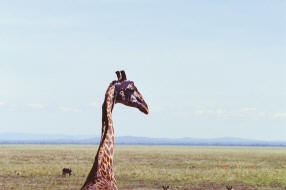
|
|
Katavi National Park. A giraffe overlooking the plain... |
|
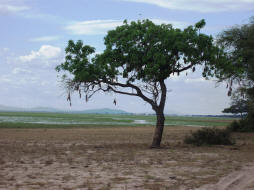
|
|
Katavi National Park. A sausage tree. |
|
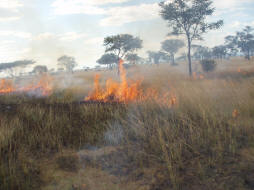
|
|
Katavi National Park. Park rangers put the grass on fire to upen up the landscape so that poachers find it more difficult to hide. |
|
|
|
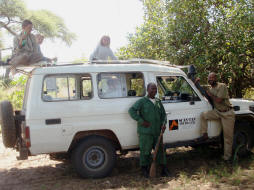
|
|
Katavi National Park. Having a rest. Normally, you're not allowed to leave your car when inside park boundaries, but with an armed ranger along ... |
|
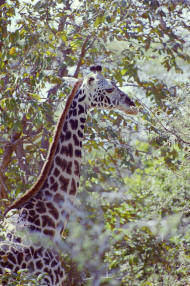
|
|
Katavi National Park. The camouflage of the giraffe is actually quite effective. |
|
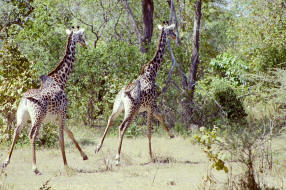
|
|
Katavi National Park. Giraffes taking refuge. |
|
|
|
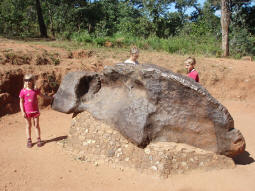
|
|
Mbeya, the Mbozi Meteorite at Mbosi. 16 tons of old iron. |
|
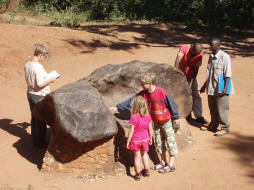
|
|
Mbeya. The Mbozi Meteorite. |
|
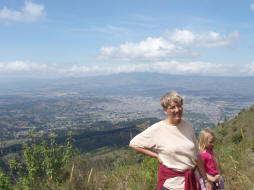
|
|
Mbeya. View over Mbeya town from up towards Loleza Peak. |
|
|
|
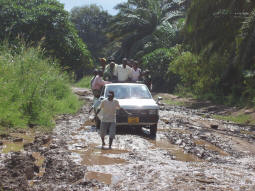
|
|
Matema. The "highway" from Kyela to Matema. |
|
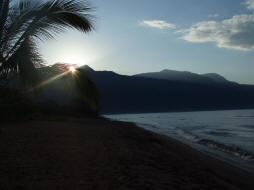
|
|
Matema, Lake Shore Resort. Sunrise over the Livingstone Mountains. |
|
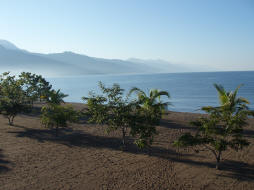
|
|
Matema. Sunrise over the Livingstone Mountains. |
|
|
|
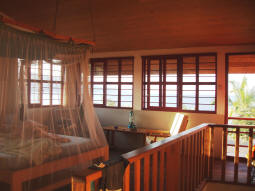
|
|
Matema Lake Shore Resort. The master bedroom upstairs with balcony and a view over the Lake Nyasa (Lake Malawi). |
|
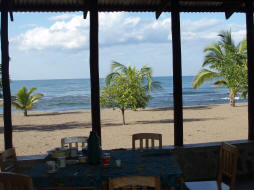
|
|
Matema, Lake Shore Resort. Breakfast with a view. |
|
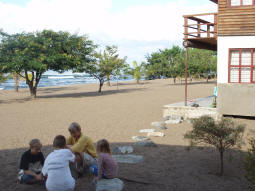
|
|
Matema Lake Shore Resort. Playing in the sand. Our house to the right, with a view to the lake. |
|
|
|
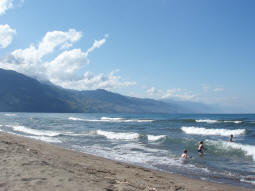
|
|
Matema. Swimming with the Livingstone Mountains in the background, the waves providing a lot of fun (fortunately, the wind here is always towards the shore). |
|
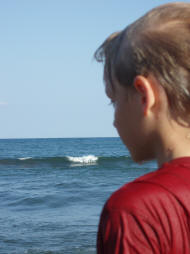
|
|
Matema, Lake Shore Resort. Aske overlooking the Lake Malawi. |
|
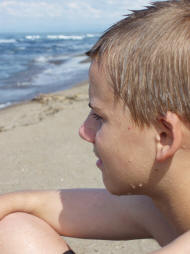
|
|
Matema. Theis overlooking the Lake Malawi. |
|
|
|
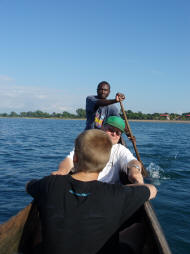
|
|
Matema. On the way to Ikombe. |
|
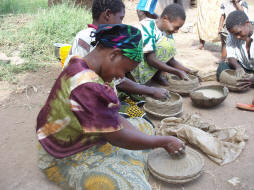
|
|
Ikombe. Local production of ceramics. |
|
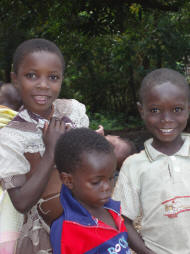
|
|
Ikombe. |
|
|
|
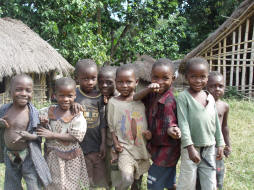
|
|
Ikombe. |
|
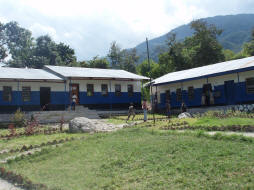
|
|
Ikombe. The school. |
|
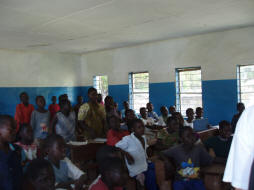
|
|
Ikombe. A school class, with as many as 132 pupils in a single class. |
|
|
|
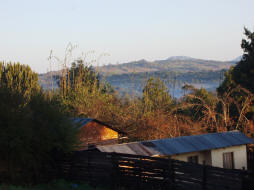
|
|
Bulongwa. Morning in the mountains. |
|
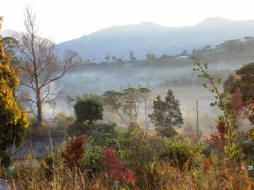
|
|
Bulongwa. Morning in the mountains. |
|
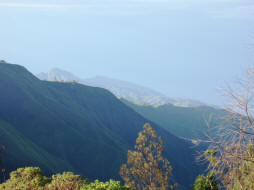
|
|
Bulongwa. View over the Livingstone Mountains. |
|
|
|
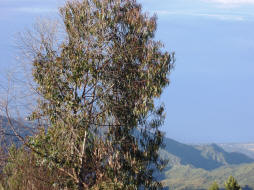
|
|
Bulongwa. View over the Lake Malawi. |
|
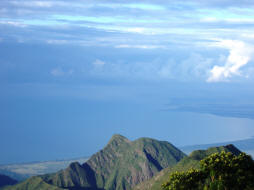
|
|
Bulongwa. View over the Lake Malawi. |
|
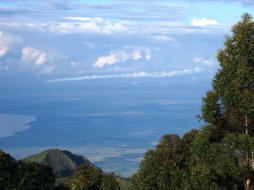
|
|
Bulongwa. View over the Lake Malawi. Matema is on the lake shore, just 12 km away but almost 1,5 km below. |
|
|
|
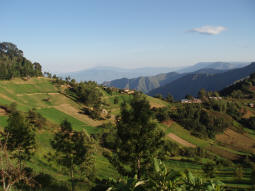
|
|
Bulongwa. Just one of the magnificent views over the rolling mountains. Note the very steep slopes being cultivated here, up to about 45º. |
|
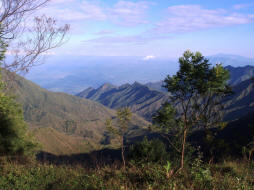
|
|
Bulongwa. View over the Livingstone Mountains. Part of the preceding picture. |
|
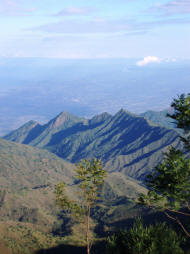
|
|
Bulongwa. View over the Livingstone Mountains. |
|
|
|
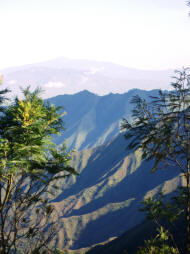
|
|
Bulongwa. View over the Livingstone Mountains. |
|
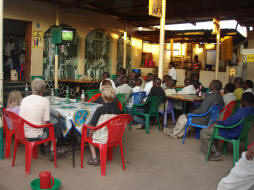
|
|
Tunduru. World Championship in soccer is digested at a local restaurant. |
|
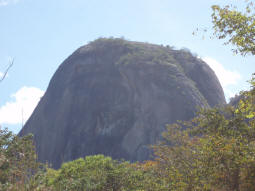
|
|
Masasi. A very large, so-called kopjes (Dutch: little head), the hardened lava plug where the surrounding volcano cone has been eroded away. |
|
|
|
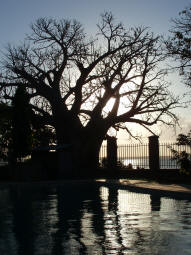
|
|
Mtwara. Sunset, baobab tree, swimming pool and the blue ocean... |
|
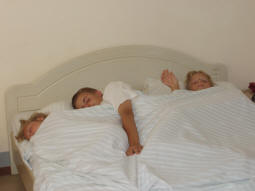
|
|
Mtwara. A pile of small strømmings... Often, the kids had to share a double bed. |
|
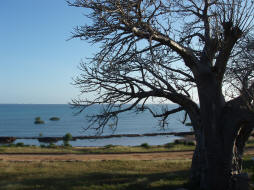
|
|
Mtwara. A baobab-tree with a view to the Indian Ocean. |
|
|
|
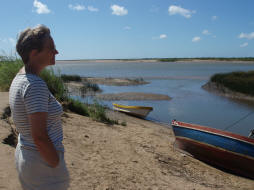
|
|
Mvambo. The Ruvuma River, in the background Mozambique. |
|
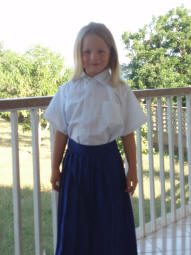
|
|
Mtwara. Lea in her new school uniform... |
|
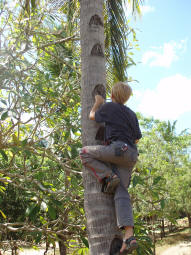
|
|
Mikindani. Aske on his way to fetch a coconut... Steps are cut into the stem of some of the coconut palms. |
|
|
|
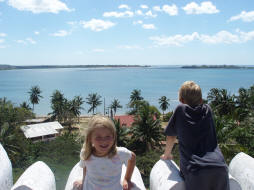
|
|
Mikindani. View over The Indian Ocean from the top of a fort built as a regional administrative centre by the Germans in 1895, now renovated as a hotel. |
|
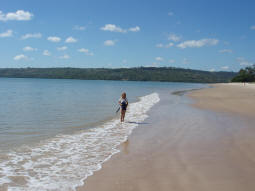
|
|
Lindi. The most magnificent beach with the finest sand. |
|
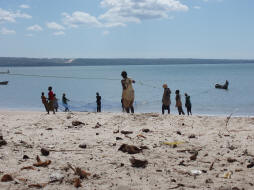
|
|
Lindi. Local fishermen pull up their net directly on the beach. |
|
|
|
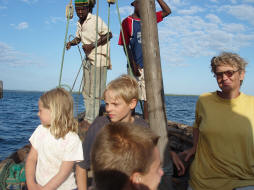
|
|
On the way to Kilwa Kisiwani - by dhow. |
|
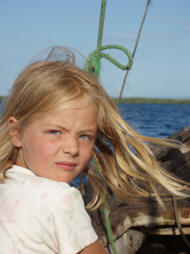
|
|
On the way to Kilwa Kisiwani. Nice to feel the sea breeze in the hair after many, many days of automobile transport. |
|
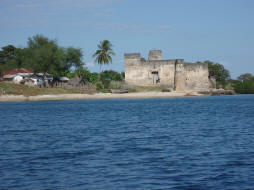
|
|
Kilwa Kisiwani. Originally, a Portuguise fort from the early 16th century. In the early 19th century the Omani Arabs took over and enlarged the construction considerably. |
|
|
|
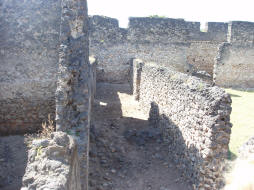
|
|
Kilwa Kisiwani (Kilwa on the island). Kilwa Kisiwani is a complex of ruins, comprising several mosques, palaces, fortifications and administrative buildings, the oldest parts dating back to the 12th century. In the years 1200-1500 Kilwa Kisiwani was the most powerful trade centre along the East African coast with trade routes to China, India, Arabia and deep into the interior of the African continent. In the 18th century Kilwa Kisiwani once again became a significant trading centre, this time based on the slave trade. |
|
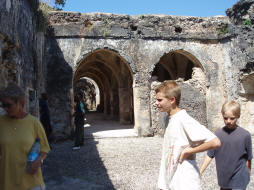
|
|
Kilwa Kisiwani. The small mosque dating from the early 15th century. |
|
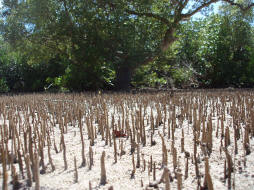
|
|
Kilwa Kisiwani. Mangrove swamp. |
|
|
|
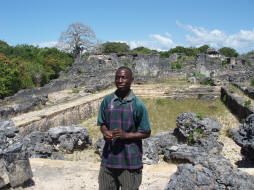
|
|
Kilwa Kisiwani, Husuni Kubwa (The Great Palace). Our guide tells us a wealth of interesting details. |
|
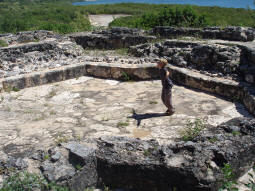
|
|
Kilwa Kisiwani, Husuni Kubwa. Sultan al-Hasan bin Suleiman's bathtub with a view over the sea, built towards the beginning of the 14th centuary. |
|
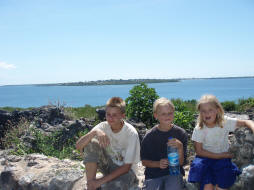
|
|
Kilwa Kisiwani, Husuni Kubwa. A well-deserved rest with a view to the Indian Ocean. |
|
|
|
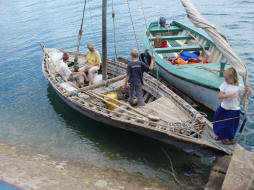
|
|
Kilwa Kisiwani. Time to return by the luxury ferry... |
|
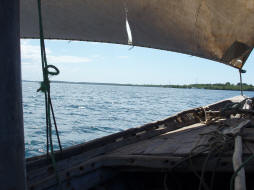
|
|
On the way back from Kilwa Kisiwani. |
|
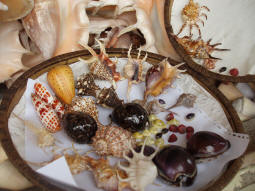
|
|
Dar es Salaam. A booth selling sea shells to the tourists at the fish market. |
|
|
|
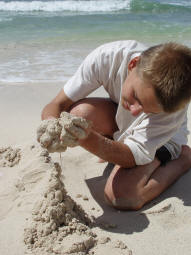
|
|
Dar es Salaam. Playing with the sand on the beach at Oyester Bay. |
|
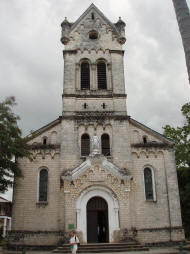
|
|
Bagamoyo is reckoned for a number of things: As the most important slave trade port on the East African coast, as the place of the first catholic mission in Tanzania and as the place to where the body of dr. David Livingstone was brought, after a nine months long journey from Zambia, and from where it was shipped on the 24 February 1874 via Zanzibar to his last place of rest in London. |
|
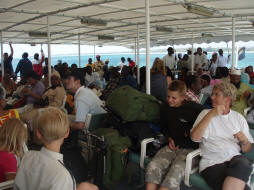
|
|
From Dar es Salaam to Zanzibar. The trip from Dar es Salaam til Zanzibar takes from 2½ to 4 hours depending on the ferry chosen (and the price paid - !). |
|
|
|
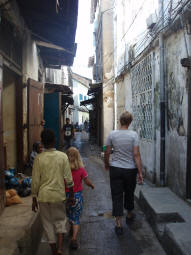
|
|
Zanzibar, Stonetown. One of the many, many narrow streets in the mace of Stonetown. Some are even a lot narrower than this one ... |
|
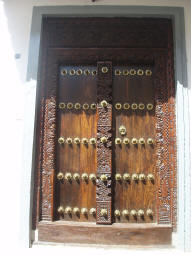
|
|
Zanzibar, Stonetown. One of the many, very nicely carved doors. |
|
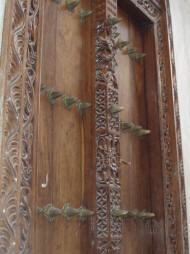
|
|
Zanzibar, Stonetown. Yet another one of the beautifully carved doors. The formidable spikes are allegedly a tradition from India meant to prevent elephants from trying to force their way into the house. |
|
|
|
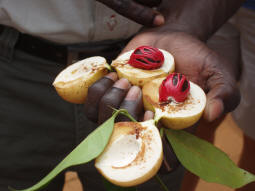
|
|
Zanzibar, on spice tour. This is nutmeg. See special picture gallery (use link above). |
|
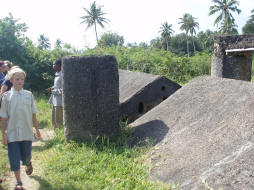
|
|
Zanzibar, Mangapwani. Slave caves used to hide slaves until shipment. After the 1845 treaty banned the export of slaves from Tanzania the slave trade continued on an illegal basis. The slave trade was simply too lucrative. |
|
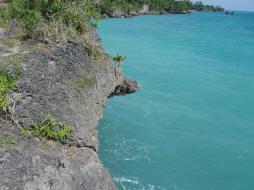
|
|
Zanzibar, Mangapwani. Note the colour of the water which is due to the suspension of coral ooze. |
|
|
|
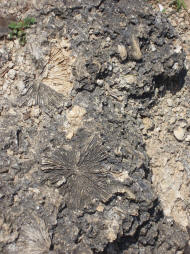
|
|
Zanzibar, Mangapwani. That the rock ground is formed by corals is undeniable. |
|
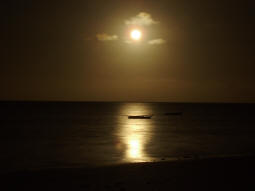
|
|
Zanzibar, Jambiani. Moonrise over the Indian Ocean. |
|
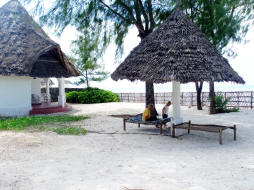
|
|
Zanzibar, Jambiani. Just relaxation. Our cabin to the left, the Indian Ocean to the right. At high tide the vandet reached the fence, just about 8 m from our doorstep. |
|
|
|
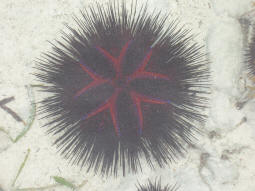
|
|
Zanzibar, Jambiani. Sea urchin, about 30 cm in diameter. |
|
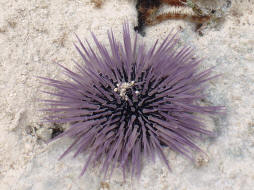
|
|
Zanzibar, Jambiani. Yet another one of the many different species of sea urchins, ca. 12 cm in diameter. |
|
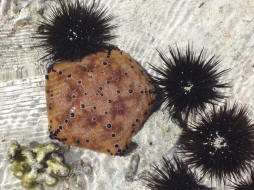
|
|
Zanzibar, Jambiani. Sea urchins and a single small coral animal, ca. 12 cm in diameter. |
|
|
|
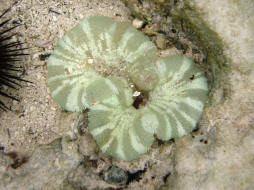
|
|
Zanzibar, Jambiani. A single, small coral animal, ca. 10 cm in diameter. Note the two small fish or shrimps. |
|
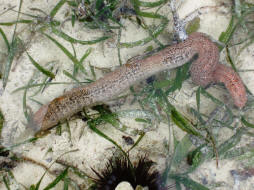
|
|
Zanzibar, Jambiani. Sea sausage, length ca. 40 cm.. |
|
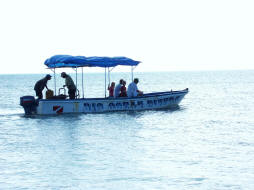
|
|
Zanzibar, Jambiani. Let's go snorkeling. |
|
|
|
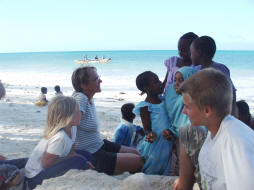
|
|
Zanzibar, Jambiani. Contact with the younger part of the local population on the beach. |
|
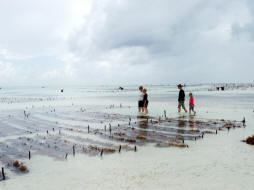
|
|
Zanzibar, Jambiani. Sea-weed fields. |
|
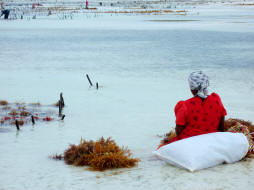
|
|
Zanzibar, Jambiani. Sea-weed cultivation, a relatively lucrative business. |
|
|
|
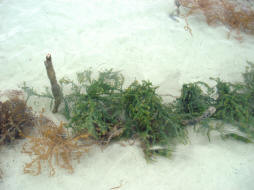
|
|
Zanzibar, Jambiani. Cultivating sea-weed. Small plants are tied to string suspended between pegs plugged into the sea floor. |
|
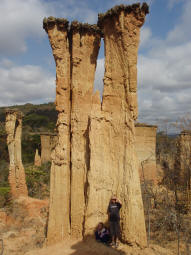
|
|
Iringa, Isimila. About 17 m high pillar of sandstone, protected by a harder layer of volcanic deposit at the top. |
|
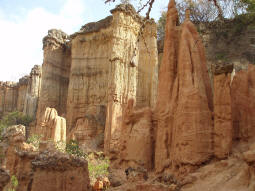
|
|
Iringa, Isimila. Sandstone pillars formed by natural erosion. |
|
|
|
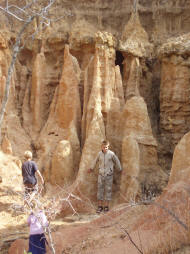
|
|
Iringa, Isimila. Fairytale formations. |
|
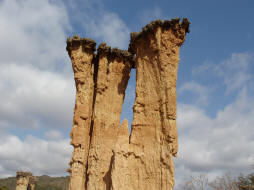
|
|
Iringa, Isimila. Where the top layer is a bit harder it protects the underlaying layers from the erosion and a column is formed. |
|
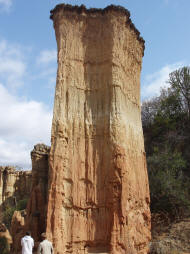
|
|
Iringa, Isimila. Here is another photo of these fantastic formations... |
|
|
|
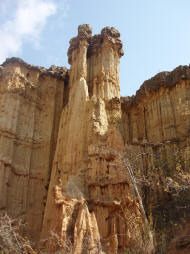
|
|
Iringa, Isimila. ... and another one. |
|
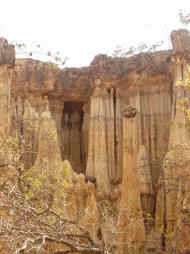
|
|
Iringa, Isimila. ... and yet another one. |
|
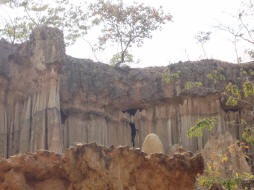
|
|
Iringa, Isimila. It was a several hectare large area. Whereever you turned your head you saw the most amazing scenery, endlessly. |
|
|
|
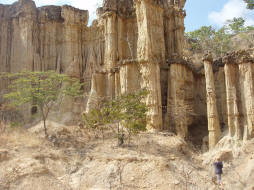
|
|
Iringa, Isimila. |
|
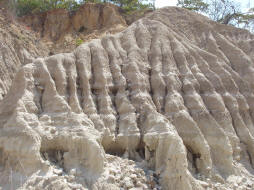
|
|
Iringa, Isimila. "The organ". |
|
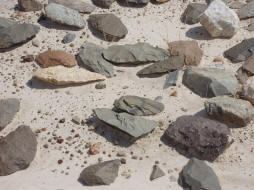
|
|
Iringa, Isimila. Stoneage tools, about 100.000 years old. |
|
|
|
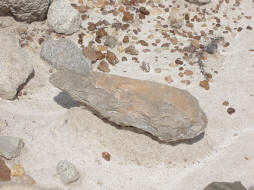
|
|
Iringa, Isimila. A spear head, about 100.000 years old. Very nicely, the erosion has left it on a little plinth. |
|
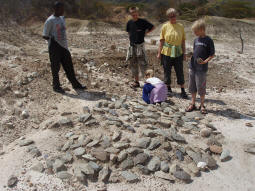
|
|
Iringa, Isimila. Stone age tools, there were thousands and thousands... This collection has NOT been collected, but lay as the toolmaker left them about 100.000 years ago. |
|
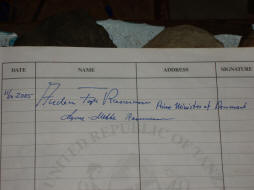
|
|
Iringa, Isimila. The prime minister of Denmark, Anders Fogh Rasmussen, was here, too. |
|
|
|
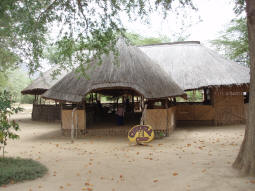
|
|
Chogela Camp, Tungamalenga. A highly recommendable camp site half an hours drive from Ruaha National Park. |
|
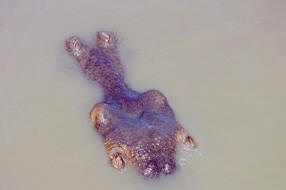
|
|
Ruaha National Park. Hippopotamus from above. |
|
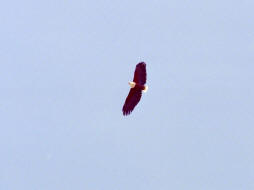
|
|
Ruaha National Park. African fish eagle. |
|
|
|
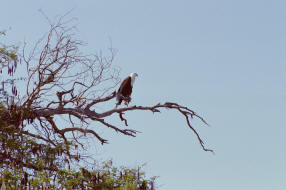
|
|
Ruaha National Park. African fish-eagle. |
|
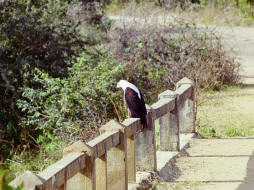
|
|
Ruaha National Park. African fish eagle. |
|
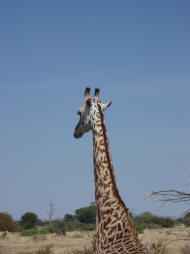
|
|
Ruaha National Park. The upper part of one of the four-legged long-necks. |
|
|
|
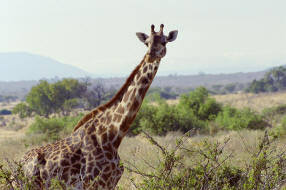
|
|
Ruaha National Park. Can you anything but love these beautiful giraffes? |
|
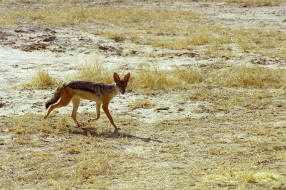
|
|
Ruaha National Park. Silverbacked jackal. |
|
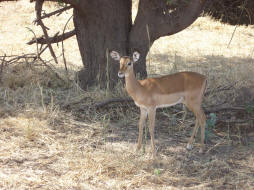
|
|
Ruaha National Park. A young male impala. |
|
|
|
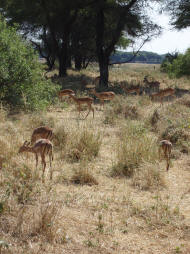
|
|
Ruaha National Park. An impala-strewn landscape. |
|
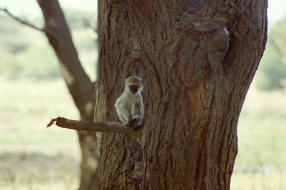
|
|
Ruaha National Park. Vervet monkey. |
|
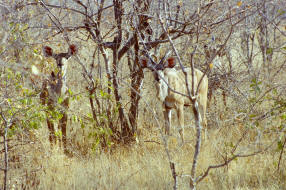
|
|
Ruaha National Park. Greater kudu. |
|
|
|
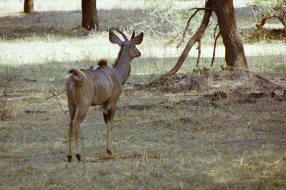
|
|
Ruaha National Park. Greater kudu. |
|
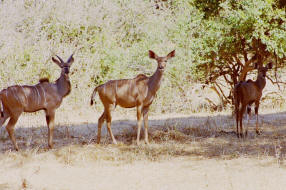
|
|
Ruaha National Park. Greater kudu. |
|
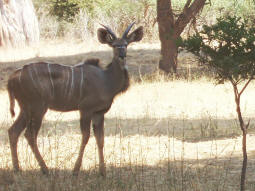
|
|
Ruaha National Park. The greater kudu. |
|
|
|
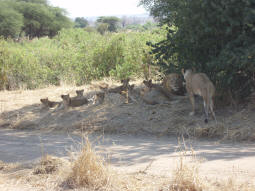
|
|
Ruaha National Park. A lion family with a male, at least three females and no less than nine cups. |
|
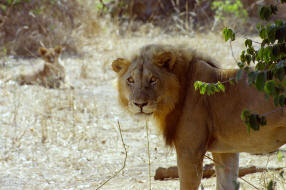
|
|
Ruaha National Park. Lion daddy keeping an eye on his family. |
|
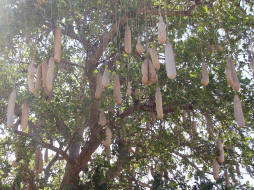
|
|
Ruaha National Park. Sausage tree. The name seems rather obvious... |
|
|
|
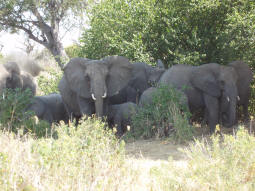
|
|
Ruaha National Park. A few of the approximately 12.000 elephants. |
|
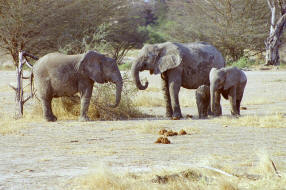
|
|
Ruaha National Park. Large and small elephants. |
|
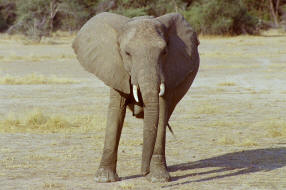
|
|
Ruaha National Park. A young hothead. |
|
|
|
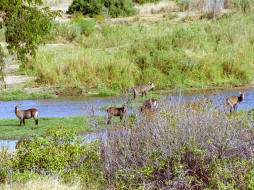
|
|
Ruaha National Park. Waterbucks. |
|
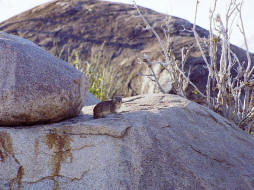
|
|
Ruaha National Park. Hyrax. |
|
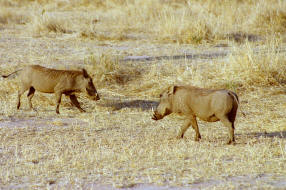
|
|
Ruaha National Park. Warthogs. |
|
|
|
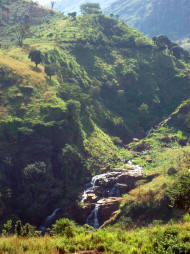
|
|
Usambara Mountains. On the road to Lushoto. |
|
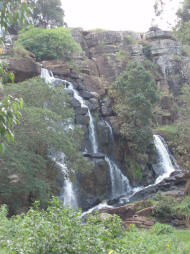
|
|
Usambara Mountains, Soni Falls. |
|
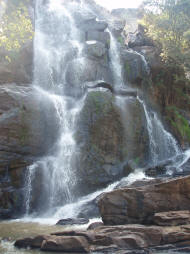
|
|
Usambara Mountains, Soni Falls. An impressive waterfall. |
|
|
|
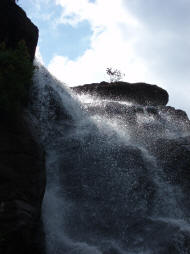
|
|
Usambara Mountains, Soni Falls. Sparkling sunlight in the falling cascades. |
|
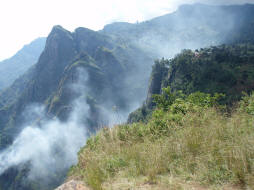
|
|
åØåUsambara Mountains, Irente Viewpoint. We are high up in the mountains, sometimes even higher than the clouds.
|
|
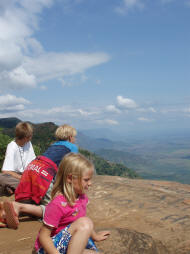
|
|
Usambara Mountains, Irente Viewpoint. An astonishing view over the Masai Steppe. |
|
|
|
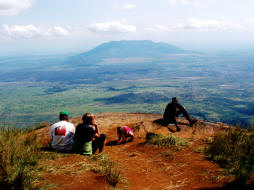
|
|
Usambara Mountains, Irente Viewpoint. |
|
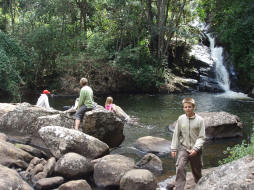
|
|
Usambara Mountains, Mguzu Falls. Unfortunately, the water was a bit too cold for a swim. Nevertheless, the time spent here was balsamic to the soul. |
|
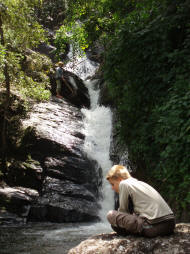
|
|
Usambara Mountains, Mguzu Falls. A very impressive and idyllic waterfall. |
|
|
|
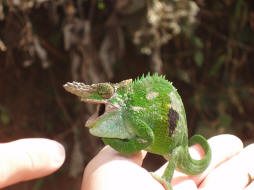
|
|
Usambara Mountains. Fisher's Chameleon, also known as Usambara Two-Horned Chameleon. |
|
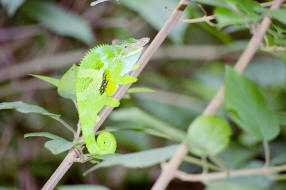
|
|
Usambara Mountains, Mguzu. Yet another chameleon. |
|
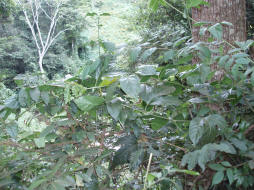
|
|
Usambara Mountains, Mguzu. Find the chameleon! |
|
|
|
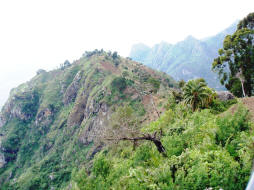
|
|
Usambara Mountains. Plenty og magnificent views. |
|
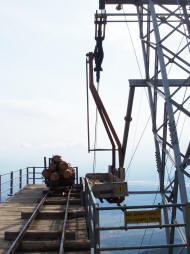
|
|
Usambara Mountains. The so-called "Sky-line"; a cable-car used to bring timber logs down the mountains. |
|
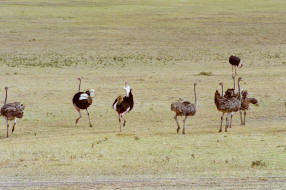
|
|
Serengeti National Park. Ostriches. Normally, these two-legged long-necks are rather shy, so it's difficult to get real close - this time we had some success. |
|
|
|
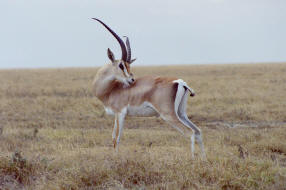
|
|
Serengeti National Park. Grant's Gazelle. |
|
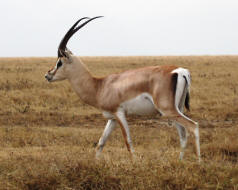
|
|
Serengeti National Park. Grant's Gazelle. |
|
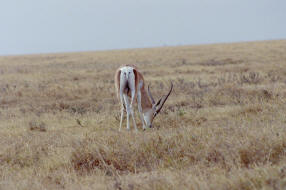
|
|
Serengeti National Park. Grant's Gazelle. |
|
|
|
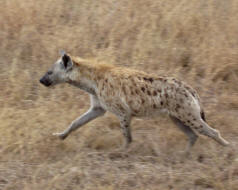
|
|
Serengeti National Park. Spotted Hyena. |
|
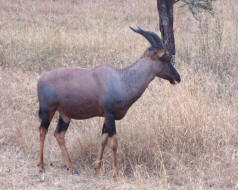
|
|
Serengeti National Park. Topi, one of the most beautiful gazelles (and very well-tasting, too - !). |
|
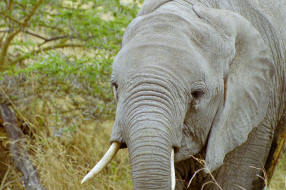
|
|
Serengeti National Park. Evidently, the animals in Ngorongoro and Serengeti are rather used to tourist and sometimes you can get real close. |
|
|
|
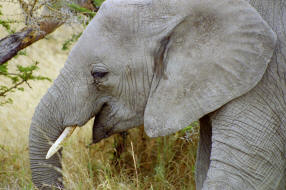
|
|
Serengeti National Park. Though elephants are huge and frightening they are also very cute. |
|
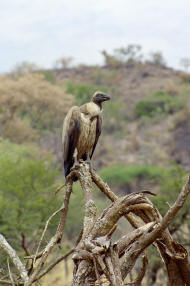
|
|
Serengeti National Park. A vulture on watch. |
|
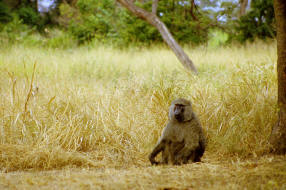
|
|
Serengeti Western Corridor, Kijereshi Tented Camp. A almost tame baboon coming real close to our hut. |
|
|
|
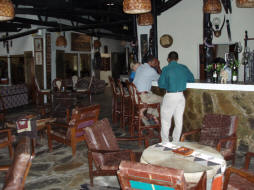
|
|
Serengeti Western Corridor, Kijereshi Tented Camp. Safari luxury. |
|
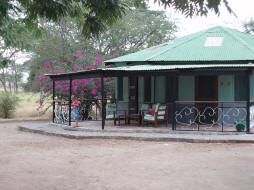
|
|
Serengeti Western Corridor, Kijereshi Tented Camp. Our half-a-hut to the left. comprising two bedrooms and two bathrooms. |
|
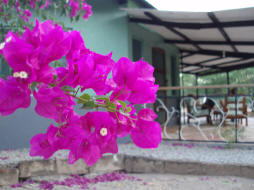
|
|
Serengeti Western Corridor, Kijereshi Tented Camp. Bougainvillea in fantastic colours. |
|
|
|
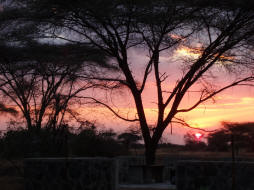
|
|
Serengeti Western Corridor, Kijereshi Tented Camp. Our last sunset in Tanzania. |
|
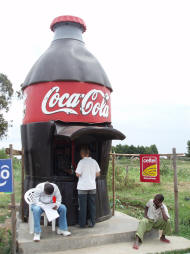
|
|
Isebania, the border between Tanzania and Kenya. Coca Cola is for sale everywhere... |
|
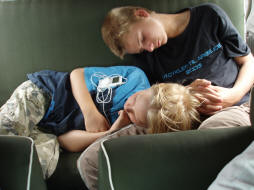
|
|
Kenya. It can be so exhausting just to sit in the car... |
|
|
|
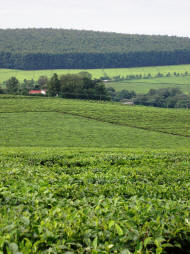
|
|
Kericho, Kenya. Tea fields almost as far as you can see. |
|
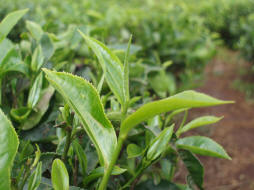
|
|
Kericho, Kenya. Tea leaves in the natural state. |
|
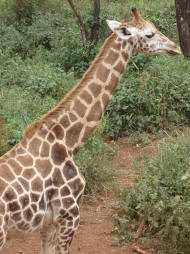
|
|
Langatta Giraffe Centre, Nairobi. Rothschild's Giraffe. Note the more regular pattern than that of the in Tanzania more common Masai Giraffe. |
|
|
|
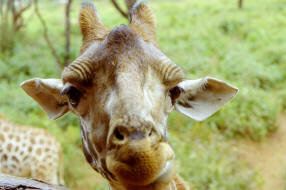
|
|
Langatta Giraffe Centre, Nairobi. wonder how close you can get... |
|
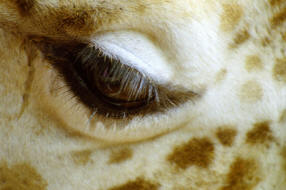
|
|
Langatta Giraffe Centre, Nairobi. Well, now it becomes difficult to get any closer - ! |
|
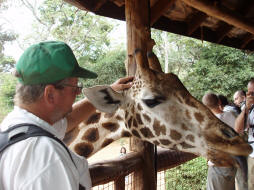
|
|
Langatta Giraffe Centre, Nairobi. ... and now you are that close you can as well scratch it behind the ears while it is hand-fed. |
|
|
|
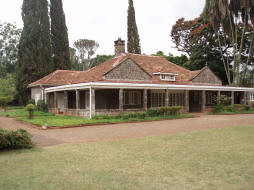
|
|
Karen Blixen's House, Nairobi. "I had a farm in Africa, at the foot of Ngong Hills." |
|
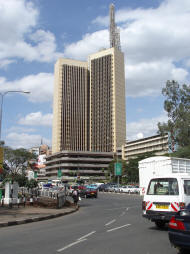
|
|
Nairobi. A different perspective on Africa... |
|
|